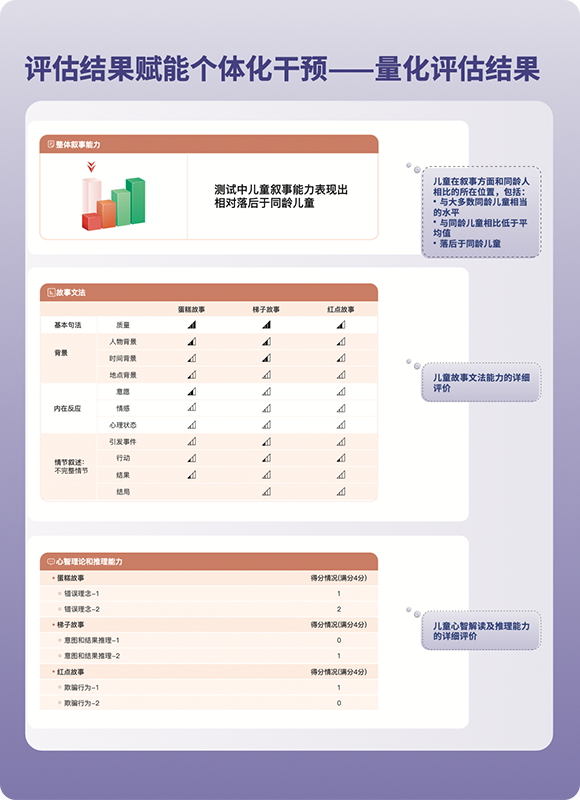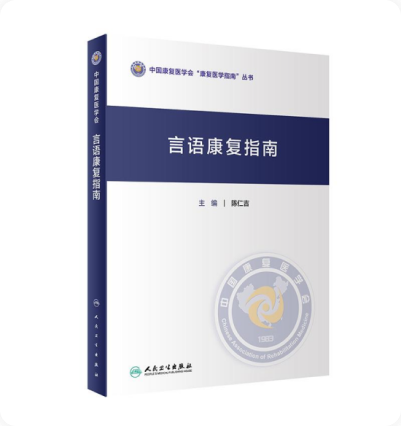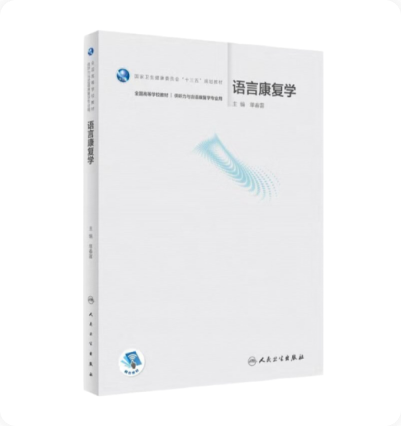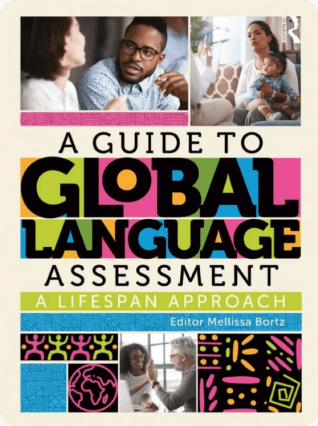Mandarin Expressive and Narrative Test

OVERVIEW
DREAM-MENT is an assessment tool dedicated to evaluating and intervening in children's narrative abilities.
Core Features: Four Major Domains: Generates quantitative reports across four major domains—macroscopic narrative skills, microscopic narrative skills, story grammar and theory of mind/inferencing—precisely identifying children's weaknesses in narrative development. Rapid AI-Powered Assessment: Enables a 30-minute quick assessment, supporting one-click generation of multidimensional analysis reports and visualized results. Deep Integration with Child Development Principles: Intelligently customizes individualized intervention plans, recommending training goals based on developmental priorities, providing scientific and efficient references for clinical decision-making and intervention planning.

Assessed Domains
- e.g., coherence in character references, temporal and causal relationships, internal motivations of characters
- e.g., background elements such as characters and setting, plot elements such as initiating events and actions
- e.g., use of descriptive vocabulary, connectives, and basic syntax
- e.g., understanding intentions and outcomes, false belief reasoning
Sample Items

Storytelling based on pictures with automatic audio recording
Research Publications
In 2018, research related to the MENT narrative assessment was published in the Journal of Speech, Language, and Hearing Research (JSLHR), a leading academic journal under the American Speech-Language-Hearing Association (ASHA).
Findings revealed that: At the macrostructural level: Children with language impairments differed from typically developing children in describing characters, settings, internal states, sequences of actions, and outcomes within events. At the microstructural level: Children with language impairments produced shorter sentences, used fewer words, and fewer complex sentences. At the finer linguistic structural level: Children with language impairments showed less usage of passive constructions, quantifiers, and the perfective aspect.


DREAM-MENT: Cited by Authorized Regulations and Textbooks




A Guide to Global Language Assessment: A Lifespan Approach
supported by the American Speech-Language-Hearing Association (ASHA), is an authoritative academic work focused on global language assessment.
